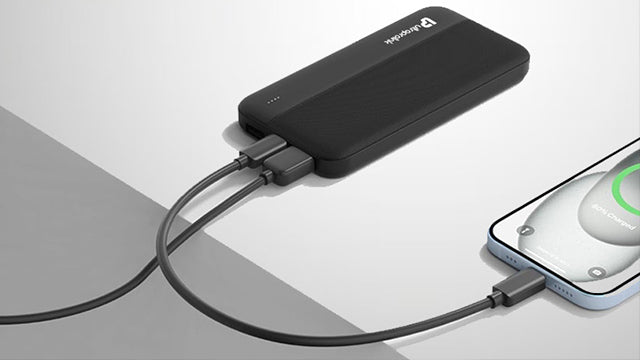Shopping cart
You have no items in your shopping cart.

In today’s digital world, the quest for continuous connectivity has made power banks indispensable for iPhone users. Concerns often arise about the safety of charging iPhones with power banks. It's important to know that iPhones are built with an internal charging circuit that regulates the power intake, ensuring the device only draws the power it requires. This mechanism safeguards the iPhone against potential damage during charging, irrespective of the power source. Our discussion unfolds around the safety, efficiency, and compatibility considerations of using power banks with iPhones, providing peace of mind to users.
The sophisticated charging circuitry of iPhones plays a pivotal role in their ability to manage power intake efficiently. This ensures that whether an iPhone is charged using a wall adapter or a power bank, the device's internal mechanisms regulate the charging process. This is critical for preventing issues such as overcharging and overheating, which could otherwise compromise the longevity and health of the battery.
The debate between power banks and wall adapters centers on convenience versus efficiency. Power banks provide the flexibility of mobile charging, a convenience that wall adapters can’t match. However, both charging methods utilize similar technologies to deliver power to your device. The crux of the matter lies in selecting a power bank that aligns with the iPhone’s charging specifications, thereby ensuring an optimal charging experience.
The marketplace is awash with power banks, but not all are suited for your iPhone. Selecting the best power bank for iPhone, including options like a MagSafe power bank for iPhone or a PD power bank for iPhone, can significantly enhance your charging experience. Opt for a power bank that supports the iPhone’s native charging protocol for quick and efficient power-ups.
The proliferation of counterfeit power banks poses a risk to your iPhone. It's imperative to opt for reputable brands that adhere to safety standards, ensuring a secure and efficient charge every time. Low priced power banks are most often use refurbished components & batteries which will only last a few months and also tend to malfunction.
A power bank’s specifications, such as milliampere-hours (mAh) and output, are crucial to its compatibility with your iPhone. A higher mAh rating signifies a larger capacity, offering multiple charges for your device, while the output determines the charging speed. Matching these specs with your iPhone’s requirements is key to a satisfactory charging experience. For larger battery iPhones like the 15Pro & 15Pro Max we would advise buying a larger capacity battery.
The concern that a high-capacity power bank might damage an iPhone is unfounded. Thanks to the iPhone’s intelligent charging management, using a high-capacity power bank is safe, as the phone will only utilize the necessary amount of power.
Beyond selecting the right charging accessories, maintaining your iPhone's battery life is crucial. Strategies such as adjusting screen brightness, preferring Wi-Fi connections, engaging Low Power Mode, and monitoring battery usage help in extending the life of your iPhone’s battery. Remember, the longevity of lithium-ion batteries, like those in iPhones, is maximized by avoiding complete discharges and exposure to extreme temperatures.
In conclusion, using a power bank to charge your iPhone is a safe and practical solution for keeping your device powered throughout the day. By making informed choices about power banks, focusing on reputable brands, and understanding the needs of your iPhone, you can ensure a worry-free charging experience. With the right care, your iPhone’s battery will continue to support your connected lifestyle efficiently.